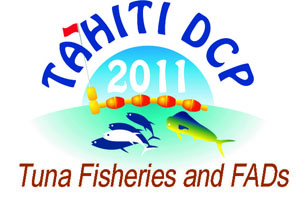Behavior of Skipjack (Katsuwonus pelamis) and Yellowfin (Thunnus albacares) tuna in an array of Anchored FADs around the Maldive Islands
1 : Marine Research Centre
(MRC)
Maldives -
Maldives
2 : Seychelles Fishing Authority
(SFA)
Victoria, Mahé -
Seychelles
3 : Institut de Recherche pour le Développement
(IRD)
UMR 212, P.o. Box 570, Victoria -
Seychelles
4 : South African Institute for Aquatic Biodiversity
(SAIAB)
Private Bag 1015, Grahamstown, 6140 -
Afrique du Sud
7 : South African Institute for Aquatic Biodiversity
(SAIAB)
Grahamstown , South Africa -
Afrique du Sud
5 : Marine Research Center
(MRC)
H. White Waves Moonlight Higun Malé 20025 -
Maldives
6 : Institut de Recherche pour le Développement
(IRD)
* : Corresponding author
UMR 212
Av. J. Monnet, 34203, Sete -
France
In order to investigate the spatial behavior of skipjack and yellowfin tuna around anchored FADs (AFADs) in the Maldives, skipjack and yellowfin tuna have been tagged with conventional and acoustic tags. The distance between adjacent AFADs in the array is much greater in Maldives than in other parts of the world. The conventional tagging study was a large-scale experiment within the AFAD network ranging from approximately 1°S of the equator to 7°N of the equator around the Maldives. 9688 skipjack and 2646 yellowfin were tagged around 31 AFADs in this network, with 854 skipjack and 111 yellowfin tuna recaptured. For the acoustic tagging study, 8 AFADs were equipped with automated acoustic receivers for a period of 12 months and acoustic transmitters were implanted into 17 skipjack and 21 yellowfin tuna. Residence times and movements between FADs are estimated using these two data sources. While significant amount of such information exist for denser AFAD arrays in other regions (e.g. Hawaii), this study provides information on the behavior of tunas within a more dispersed array of AFADs. As such, it provides insights into the effect of FAD densities on the behavior of tunas which is important for management.

 PDF version
PDF version
